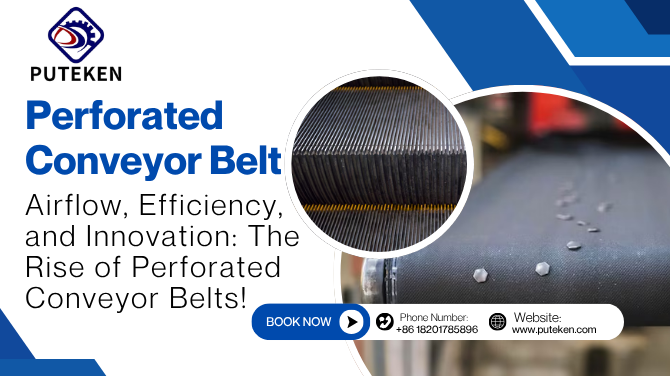Notifications

8 minutes, 55 seconds
-200 Views 0 Comments 0 Likes 0 Reviews

In the world of modern manufacturing, speed and cleanliness aren’t just goals — they’re necessities. From food processing plants to electronic assembly lines, production facilities across industries are constantly seeking ways to maximize output while minimizing contamination and downtime. That’s where perforated conveyor belts take center stage.
At first glance, a perforated conveyor belt might seem like just another belt with holes in it. But make no mistake — these carefully engineered components are revolutionizing production systems by providing an unbeatable combo of faster throughput, superior ventilation, and easier cleaning. And when it comes to delivering top-tier solutions in this domain, Shanghai Puteken Transmission System Co., Ltd. has been quietly leading the charge.
Let’s dig deep into how perforated conveyor belts are driving cleaner, faster, and more efficient production lines — and why they might just be the missing piece in your manufacturing puzzle.
A perforated conveyor belt is exactly what it sounds like — a conveyor belt embedded with a pattern of holes or slits throughout its surface. These holes allow for air, liquid, or light to pass through, making the belt ideal for processes that involve washing, cooling, heating, or drying.
Key Components and Design Features
Perforated belts typically consist of:
Depending on the industry, materials used include:
Purpose of Perforations
So why the holes? These perforations serve multiple critical functions:
Airflow and Drainage Explained
In industries like food or textiles, moisture is the enemy. Perforations allow for immediate drainage and airflow, which prevents pooling, reduces bacteria growth, and speeds up drying or cooling.
Shanghai Puteken offers belts with:
Major Benefits of Perforated Conveyor Belts
Food Processing and Packaging Perfect for:
Pharmaceuticals and Healthcare
Used in sterile environments where cleanliness and airflow are critical.
Textile and Fabric Drying
Helps move fabrics through heated zones while allowing moisture to escape quickly.
Electronics Manufacturing
Ideal for cooling delicate components after soldering or washing processes.
Wastewater Treatment and Recycling
Excellent for separating solids from liquids and allowing fluid drainage.
Use food-grade cleaning sprays and high-pressure water jets regularly to maintain sanitation and function.
Maintenance Tips from Experts
Common Issues and Quick Fixes
Real-World Case Studies
Sustainability and Eco-Friendly Benefits
In a world where productivity and cleanliness are paramount, perforated conveyor belts are proving to be the unsung heroes of manufacturing. Whether it’s boosting airflow, cutting down cleaning time, or speeding up the entire production line, these belts make a massive impact.
If you're aiming to build a smarter, faster, and cleaner production environment, there’s no better partner than Shanghai Puteken Transmission System Co., Ltd. Their cutting-edge perforated conveyor belt solutions are transforming industries — one clean, efficient process at a time.
1. What makes a perforated conveyor belt different from a standard one?
Perforated belts have holes that allow airflow and drainage, making them ideal for processes involving moisture, heat, or the need for hygiene.
2. How do perforated belts help improve hygiene?
The perforations prevent fluid buildup and make cleaning easier, reducing the risk of bacterial growth.
3. Are these belts suitable for high-temperature environments?
Yes, depending on the material, perforated belts can withstand a wide range of temperatures, especially those made with stainless steel or heat-resistant plastics.
4. How long do perforated conveyor belts last?
With proper maintenance, these belts can last several years, even in high-demand environments.
5. Can I get a customized solution for my factory?
Absolutely. Shanghai Puteken offers fully customized perforated belts tailored to your production needs.

